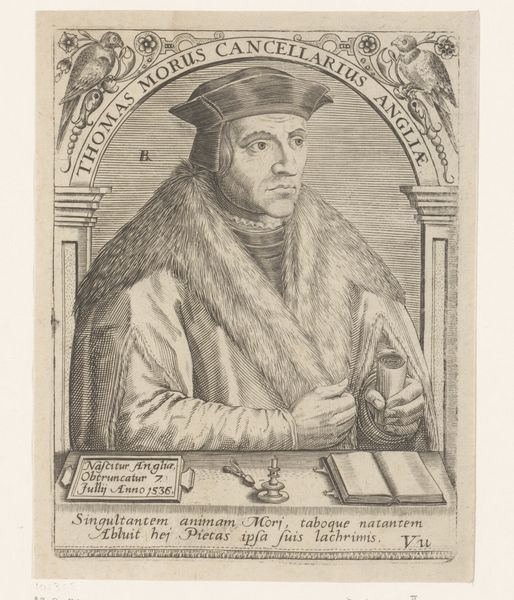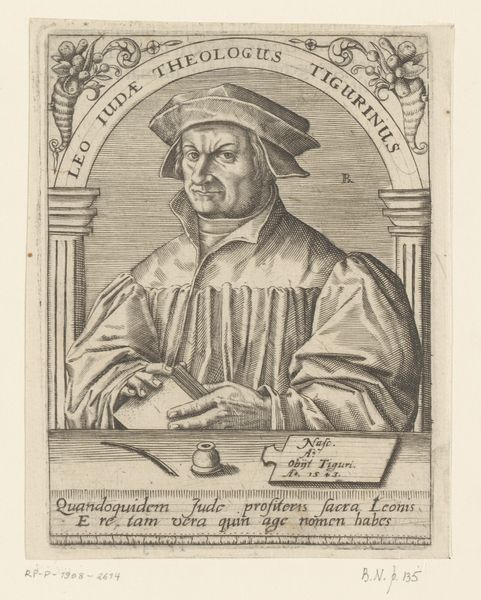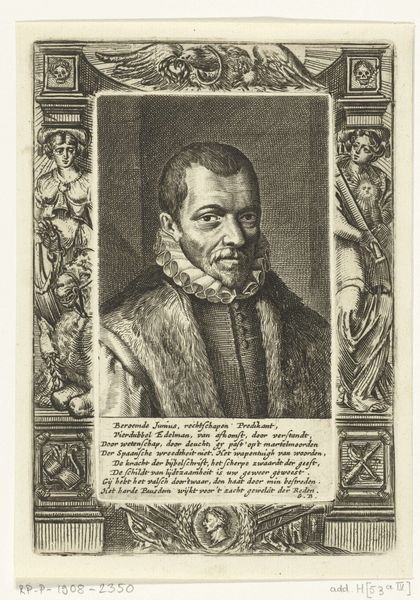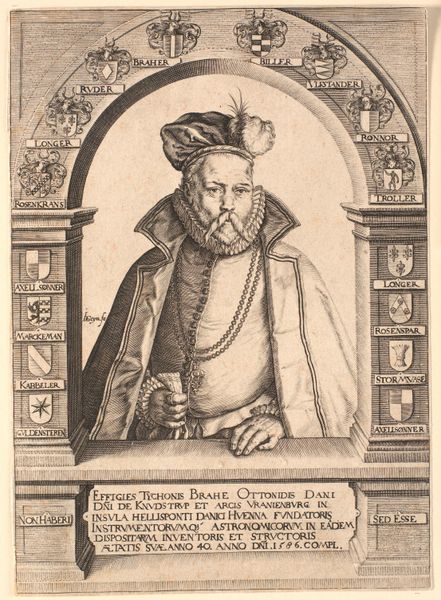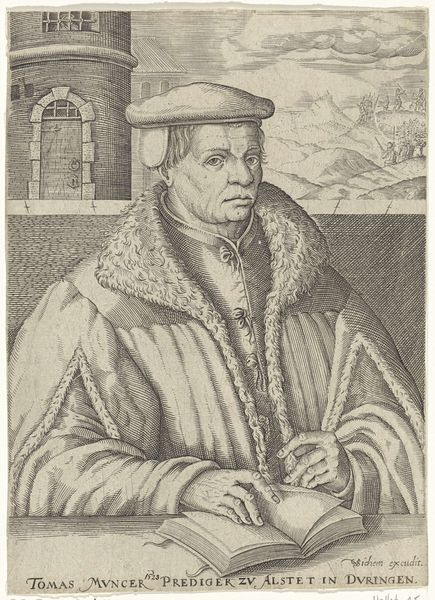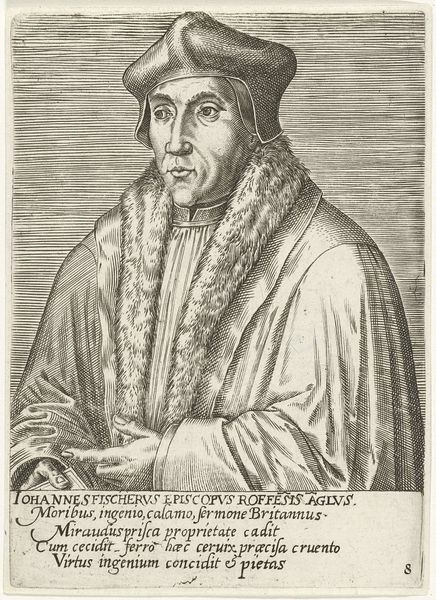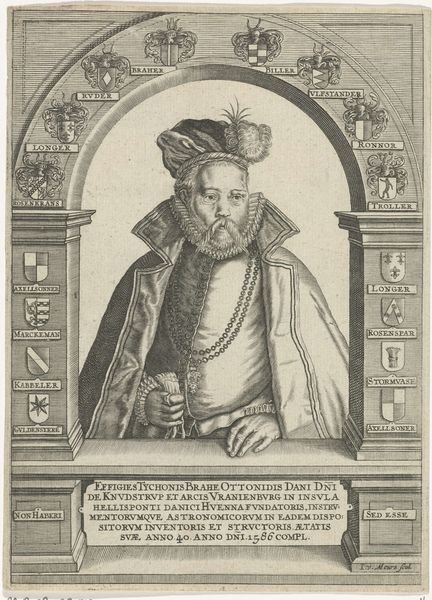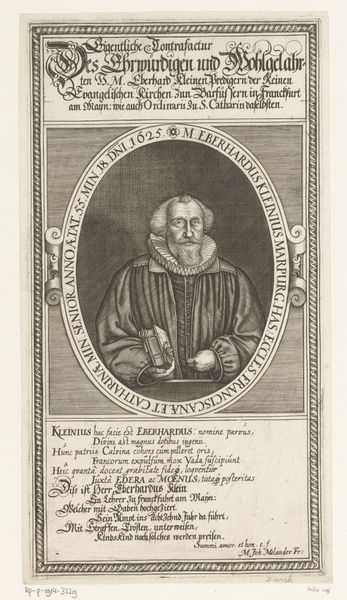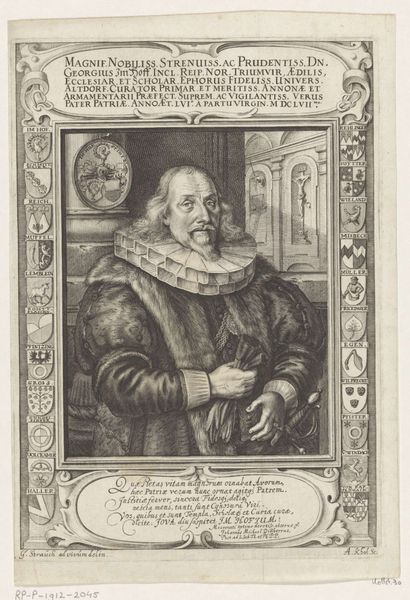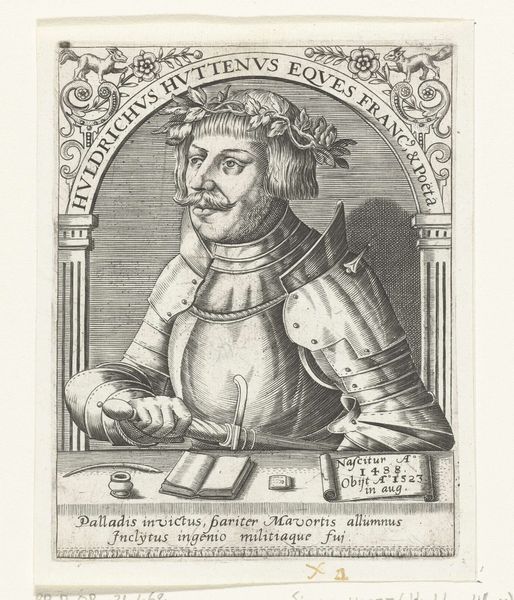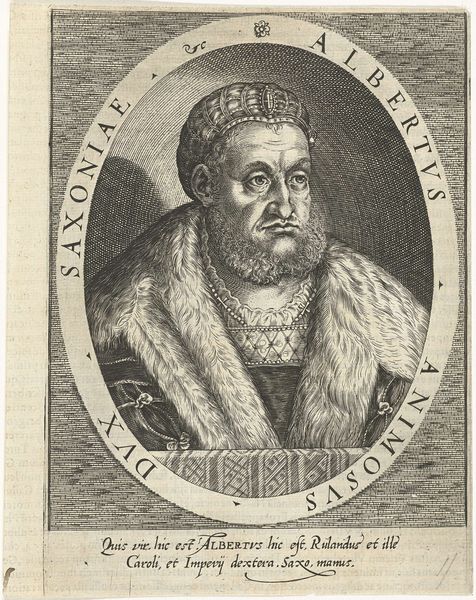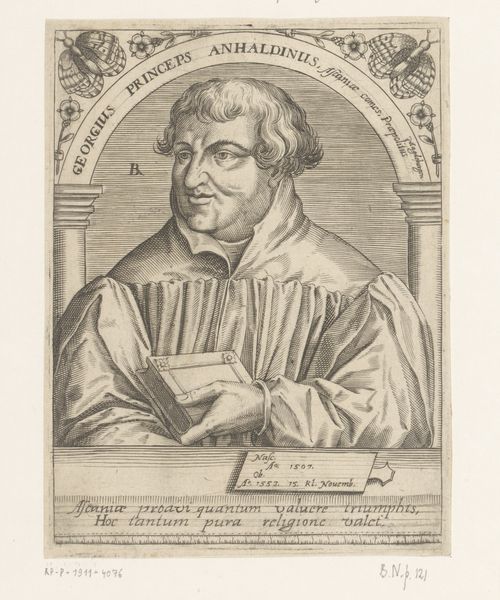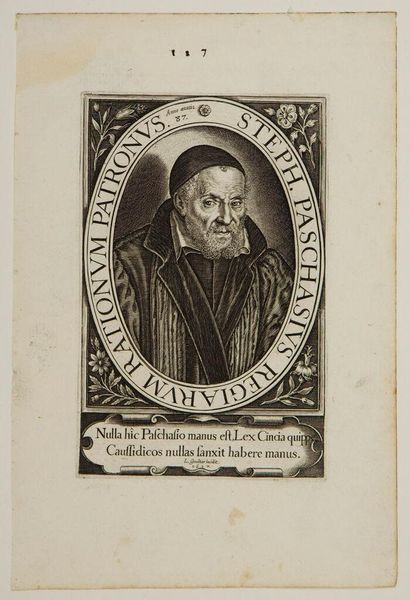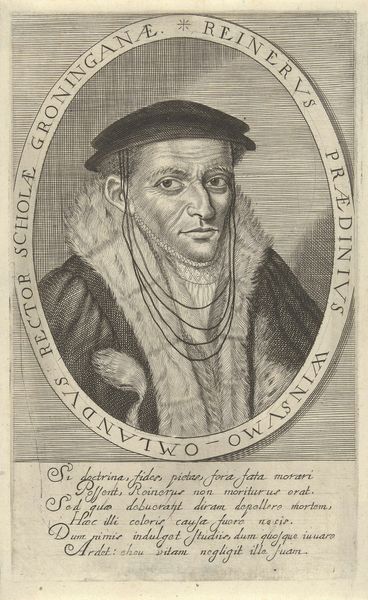
print, engraving
#
portrait
#
baroque
#
dutch-golden-age
# print
#
engraving
Dimensions: height 171 mm, width 124 mm, height 275 mm, width 167 mm
Copyright: Rijks Museum: Open Domain
Curator: Take a moment to observe this engraving, created in 1608 by Christoffel van Sichem I. It's a portrait titled "Portret van Thomas Muntzer," currently held at the Rijksmuseum. Editor: My first impression is how stern he appears. There's such a contrast between the fur-trimmed coat, a symbol of wealth, and his severe gaze. Curator: Exactly. This portrait situates Muntzer within the visual language of the Dutch Golden Age even though Muntzer died in the 16th century. Van Sichem uses the conventions of Baroque portraiture to make a political point. Editor: Political indeed. The background details certainly contribute—the tower on one side suggests imprisonment, and the army on the other… what's that implying? Curator: Those are references to his role in the German Peasants' War and his subsequent capture and execution. Sichem is very intentionally placing Muntzer in the context of religious and social upheaval. He was a complex figure seen differently through varied political lenses. Editor: The book in his hands also speaks volumes, doesn’t it? Knowledge, literacy… tools for reform and dissent. His finger placed carefully to a marked verse. Curator: Indeed. And it is important to acknowledge that prints like these served a crucial function in shaping public opinion and disseminating ideas. The elaborate border around the image and the text below it were deliberately crafted to convey meaning and sway viewers. It functioned as propaganda as much as an art object. Editor: Propaganda or remembrance, this image succeeds in conveying the gravity and intensity surrounding Thomas Muntzer’s life and legacy, freezing a moment of conflict into lasting cultural memory. Curator: Absolutely. This work shows how art can condense complicated historical events and social critiques into accessible images.
Comments
No comments
Be the first to comment and join the conversation on the ultimate creative platform.
